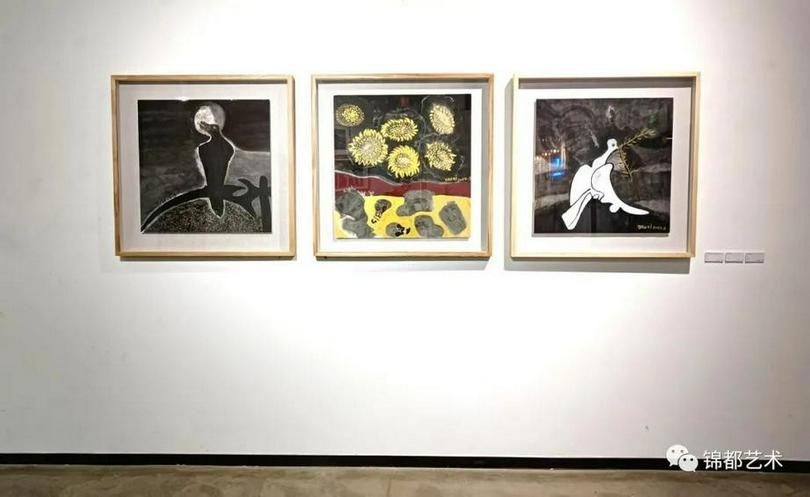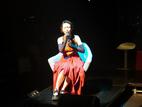An exhibition of Chinese ink wash paintings by a famous Christian artist opened in Beijing on November 12.
Under the theme of “Daozi—The Recurring Commencement", the academic exhibition shows 22 representative ink-wash paintings that have been created by Daozi since 2007, infused with Christian elements. The preface of the display is titled "Dark Etching and Prayer".
Daozi, whose real name is Wang Min or Samuel Wang, is a renowned poet, art critic, and professor and Ph.D. supervisor from the Academy of Art & Design at Tsinghua University. He started to produce “saintism ink wash paintings” with Christian elements around 2000. His work God and Gold won the 20th MISEREOR-Hungertuch Artistic Creation Award in Germany and was selected as the Lenten Curtain for Churches in Germany in 2016.
Daozi holds that his works present multiplication, a dialogue between different essences, and shape ideals and faith.
The artist believes that his works are characterized by a new kind of artistic performance and narration. He stressed several times that his “saintism ink wash paintings” are mental art rather than religious art, pertaining to the eternal-value-oriented spirit.
Along with the launching ceremony, a symposium was conducted to comment Daozi’s paintings.
Artistic critics and scholars dived into an analysis of the ink-wash paintings from the perspectives of philosophy, theology, religion, social science, culture, history, and poetry.
Wang Luxiang, a famous art critic, culture scholar, and researcher at China National Academy of Painting said, “Prayer is the last expression of the weakest of the weak in the most desperate of situations when someone can barely still respond. Miracles always happen during such a period. Fate will be reversed when one can bounce back due to God’s intervening power.”
Yang Peng, a professor of Chinese studies, summarized that Daozi’s paintings possess an over-arching style: “darkness and hope, darkness and faith.” “Prayer points toward hope and strength. Dark corrosion means the world suppresses, consumes, tortures, and dilutes lives. . . . But Daozi’s paintings have brought a candlelight to this dim world. Jesus said that you should be salt and light bringing the flavor and light of life everywhere you are. Don’t live in flavorless darkness.”
Ye Kuangzheng, a renowned poet and columnist, commented: “His works, Chinese ink wash paintings, contain the charm of ink wash, Christian aesthetics and dialogue. The core of Christian aesthetics is suffering. One scene, in which Jesus was crucified on the cross, (the painter) was not portraying his own situation, but rather expressing the human suffering God feels . . . . This aesthetic perspective is rarely seen in Chinese ink wash paintings. (The painter) was creating a dialogue between Christian aesthetics and suffering. To some degree, we have more concrete paintings here presenting both faith and God.”
- Translated by Karen Luo












